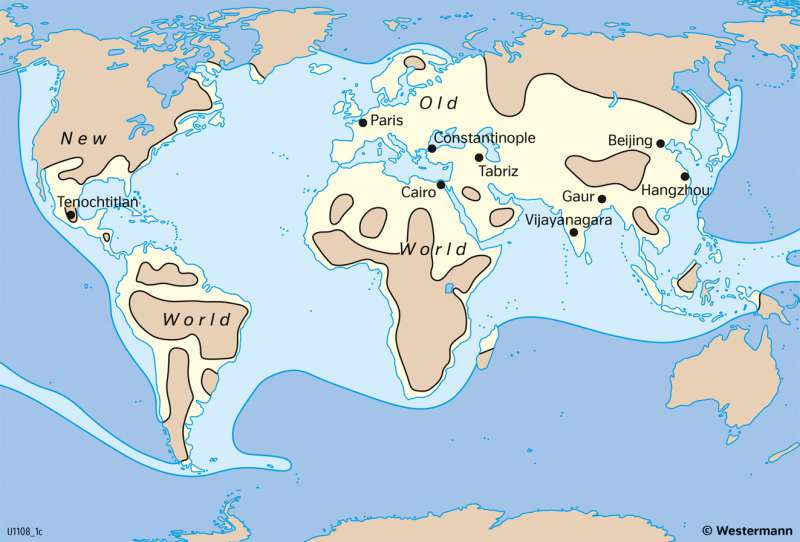Known world from a European perspective around AD 1500
Geographical discoveries
978-3-14-100890-6 | Page 29 | Ill. 3

Overview
Around the year 1500, about half of the world was known from a European perspective. Large parts of present-day Russia, especially Siberia, and the interior of Africa were undiscovered. People were known to live in these areas, but information about the geography of these countries was not available.
Ekploring African coasts
From the 10th century onwards, Arabs travelled as far east as Ethiopia, along the coast to Madagascar, west to Senegal and inland to Lake Chad. Due to the relations of Venice and Genoa with North Africa, cartographic knowledge remained limited to its territories. The greatest progress in the knowledge of the true shape of the whole continent was due to the Portuguese. In 1487, Bartolomeo Diaz discovered the Cape of Good Hope. In 1497, Vasco da Gama had reached India for the first time by sea around Africa in a European ship.
Impact on the world view
The discoveries from 1492 onwards did not initially have any serious impact on the prevailing world view. This also applies to the voyages of the Portuguese along the African west coast in the decades before Columbus. They did not turn the world view upside down. But they did make it clear that the equatorial regions of the Northern and Southern Hemispheres were actually inhabited. It was not until 1507 that the prevailing view of the world changed fundamentally with the realisation by the Italian Amerigo Vespucci that Columbus had discovered a new, unknown part of the world, and that the first circumnavigation of the globe happened from 1519 to 1522.
The American Continent
North and South America had not been discovered by Europeans until 1492 by Christopher Columbus. The Italian Amerigo Vespucci then sailed along the coast of South America. By 1500, the first European adventurers had already sailed the coasts of North and South America, including the mouth of the Amazon. In 1517 and 1518, the first Spanish expeditions reached the Mexican peninsula of Yucatán. The abundant gold finds were of interest to the Spaniards. By 1521, Cortes had succeeded in overthrowing the Aztec empire with the help of numerous indigenous allies. Fernando Magellan sailed along the coast of South America from 1519. He sailed the Strait of Magellan, named after him, and crossed the Pacific Ocean to the Philippines, where he was killed. After Magellan's death, it was the captain of his last ship, Juan Sebastian Elcano, who returned to Spain. He had thus been the first to circumnavigate the globe.




